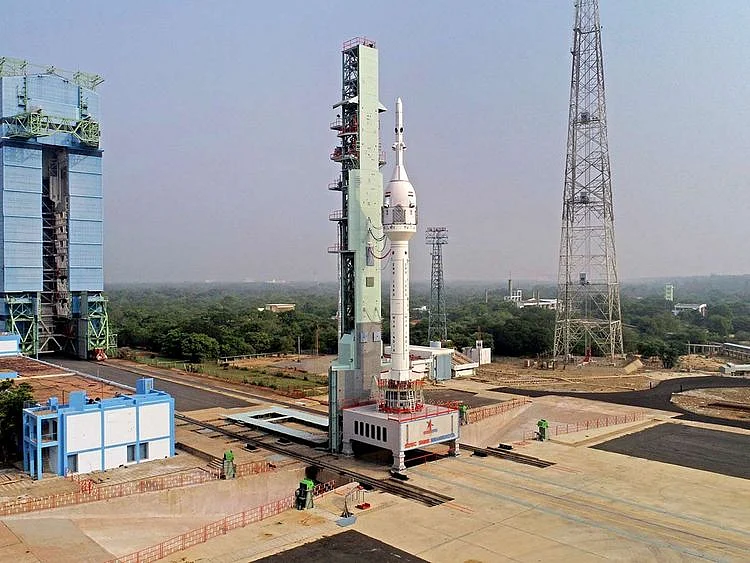Gaganyaan: Indian rocket to test crew escape system lifts off successfully after delays
India’s first human space mission or Gaganyaan is expected to happen in 2025

Sriharikota: India’s first rocket as part of its human space mission Gaganyaan, Test Vehicle-D1 (TV-D1) lifted off successfully at 10 am on Saturday after delays.
The test vehicle blasted off from the first launch pad at the rocket port here.
The lift-off was originally scheduled at 8 am but owing to weather condition and poor visibility it was rescheduled for 8.45 am.
But it finally lifted off only at 10 am after technical glitches were sorted.
The Saturday morning mission called Flight Test Vehicle Abort Mission-1 (TV-D1) will demonstrate the crew escape system and Saturday’s mission is the first of the four such test flights planned by Indian Space Research Organisation (ISRO), said Chairman S. Somanath.
In other words, if something goes wrong with the rocket carrying the astronauts in the crew module, then they have to be saved as their lives are at risk.
Designed to save lives
The crew escape system is designed to protect the astronauts lives by bringing them safely down to splash on the sea.
Like a fighter pilot ejecting from a fighter plane, the crew module with the astronauts will get separated and splash down on the sea with the help of parachutes.
As per plans, India’s first human space mission or Gaganyaan is expected to happen in 2025 and testing the crew escape system is part of that.
According to ISRO, the Saturday flight is for flight demonstration and evaluation of test vehicle sub systems; flight demonstration and evaluation of crew escape system including various separation systems and crew module characteristics and deceleration systems demonstration at higher altitude and its recovery.
44 tonnes
Measuring about 35 tall and weighing 44 tonnes, the test vehicle uses a modified Vikas engine which is powered by liquid fuel.
The crew module and crew escape system are mounted at the fore end of the rocket.
The entire flight sequence - from the test rocket’s lift off to the crew module touchdown at the sea with the deployment of parachutes - will take about 531 seconds or about nine minutes.
According to ISRO, the mass of the crew module is 4,520 kg and is a single walled unpressurised aluminium structure. At about 61 seconds into the flight and at an altitude of 11.9 km, the test vehicle/rocket and the crew escape system will get separated.
And 91 seconds after the lift off and at an altitude of 16.9 km, the crew module and crew escape system will get separated.
Abort sequence
Subsequently, the abort sequence will be executed autonomously commencing with the separation of crew escape system and deployment of the series of parachutes, finally culminating in the safe touchdown of the crew module in the sea, about 10 km from the coast of Sriharikota, ISRO said.
The crew module will house the astronauts in a pressurised earthlike atmospheric condition during the real human space mission.
Currently the crew module for the Gaganyaan mission is in different stages of development. The TV-D1 is an unpressurised version but has an overall size and mass of actual Gaganyaan crew module and would house all the systems for the deceleration and recovery. The avionics systems in the crew module are in a dual redundant mode configuration for navigation, sequencing, telemetry, instrumentation and power.
According to ISRO, the crew module in this mission is extensively instrumented to capture the flight data for evaluation of the performance of various systems. The deceleration of the crew module will be done with parachutes with pyro systems. The parachute deployment initiation will be done when the crew module is at about 17 km altitude.
The splash down
The crew module will splash down on the sea at about 10 km from the launch pad at Sriharikota at about 531 seconds after the rocket’s lift off and would float till it was recovered by the Indian Navy.
Recovery ships will approach the crew module and a team of divers will attach a buoy, hoist it using a ship crane and bring it to the shore. The crew escape system will hit the sea at about 14 km from Sriharikota.
This Test Vehicle mission with this crew module is a significant milestone for the overall Gaganyaan programme as a near-complete system is integrated for a flight test. The success of this test flight will set the stage for the remaining qualification tests and unmanned missions, leading to the first Gaganyaan mission with Indian astronauts, ISRO said.
Sign up for the Daily Briefing
Get the latest news and updates straight to your inbox
Network Links
GN StoreDownload our app
© Al Nisr Publishing LLC 2025. All rights reserved.